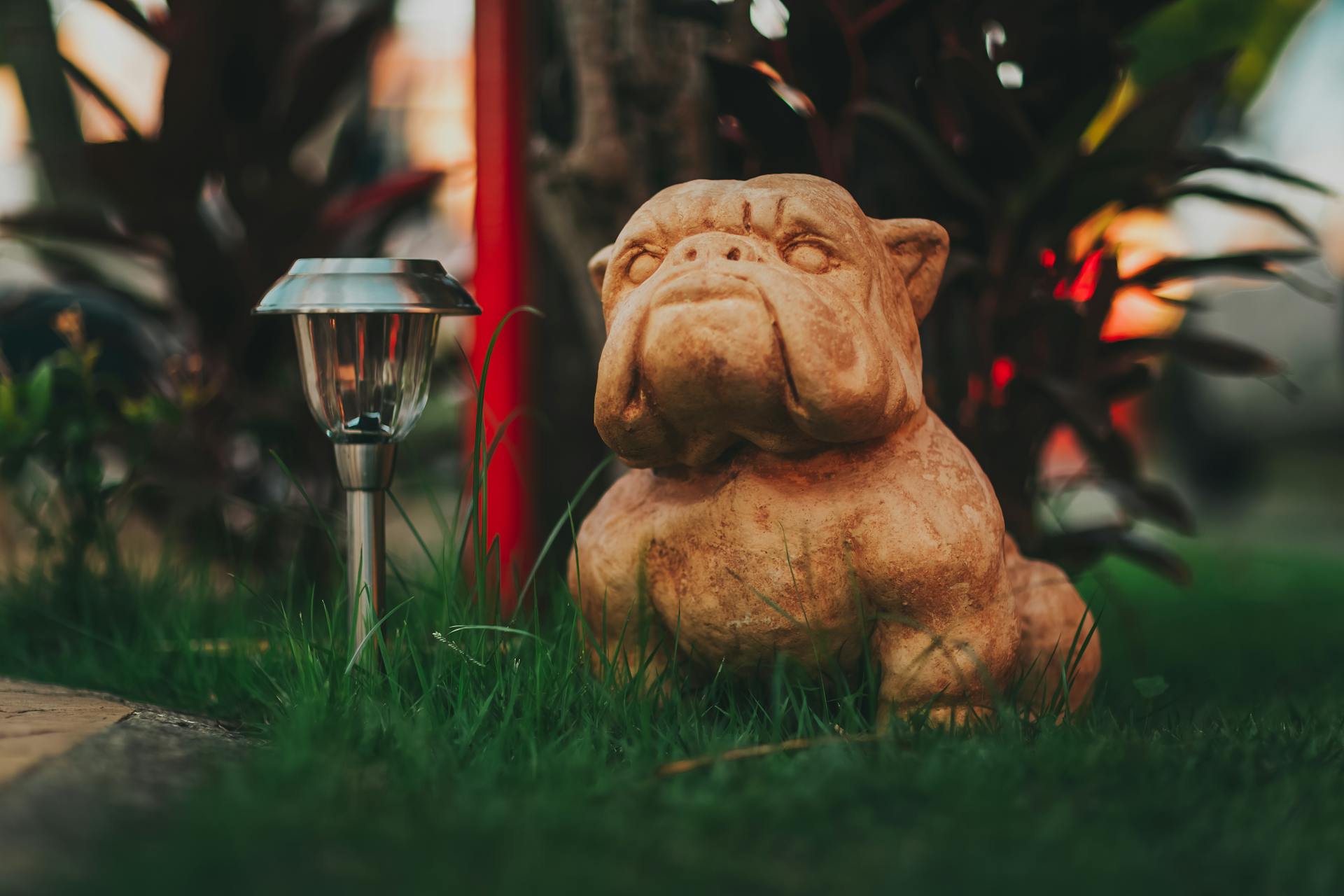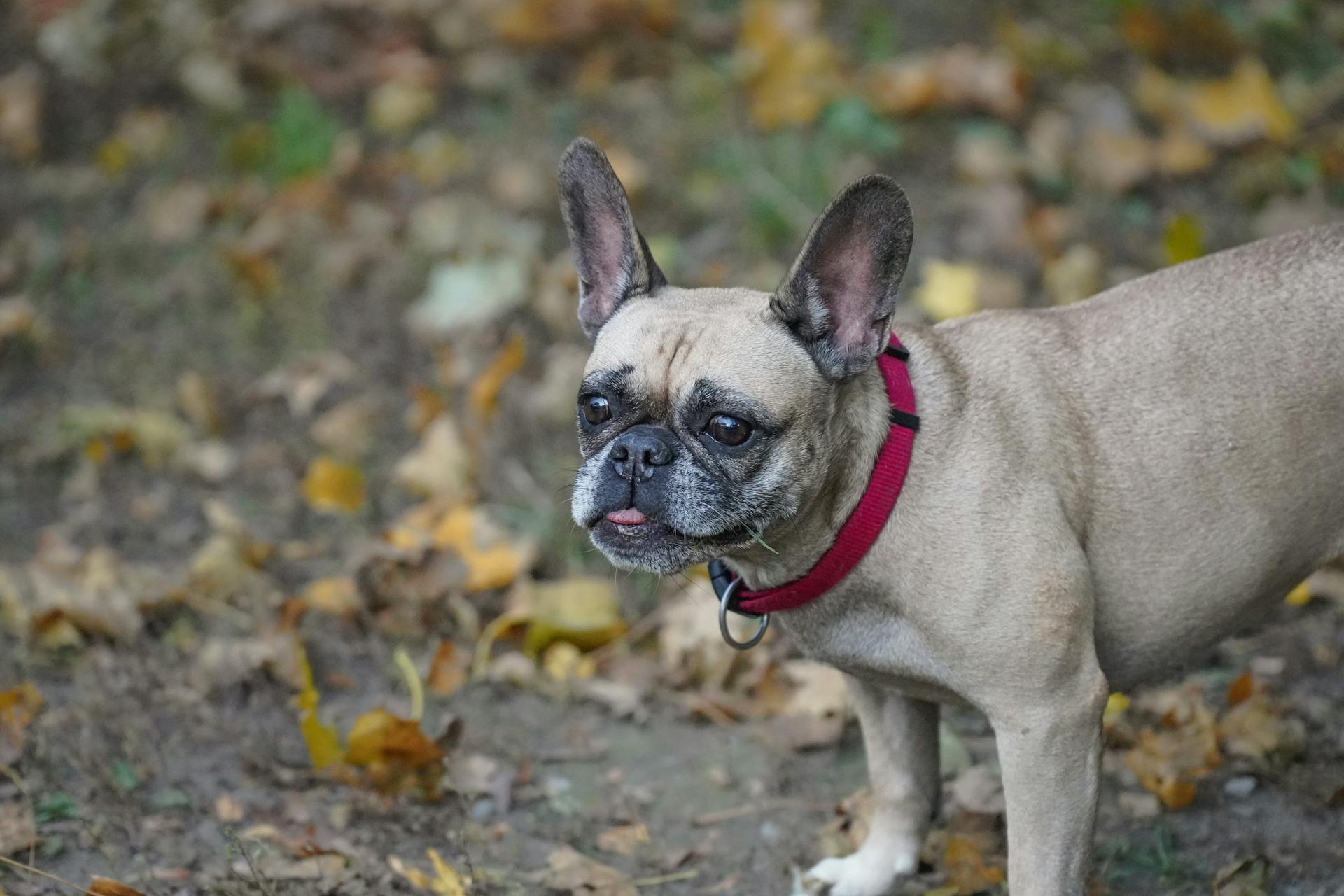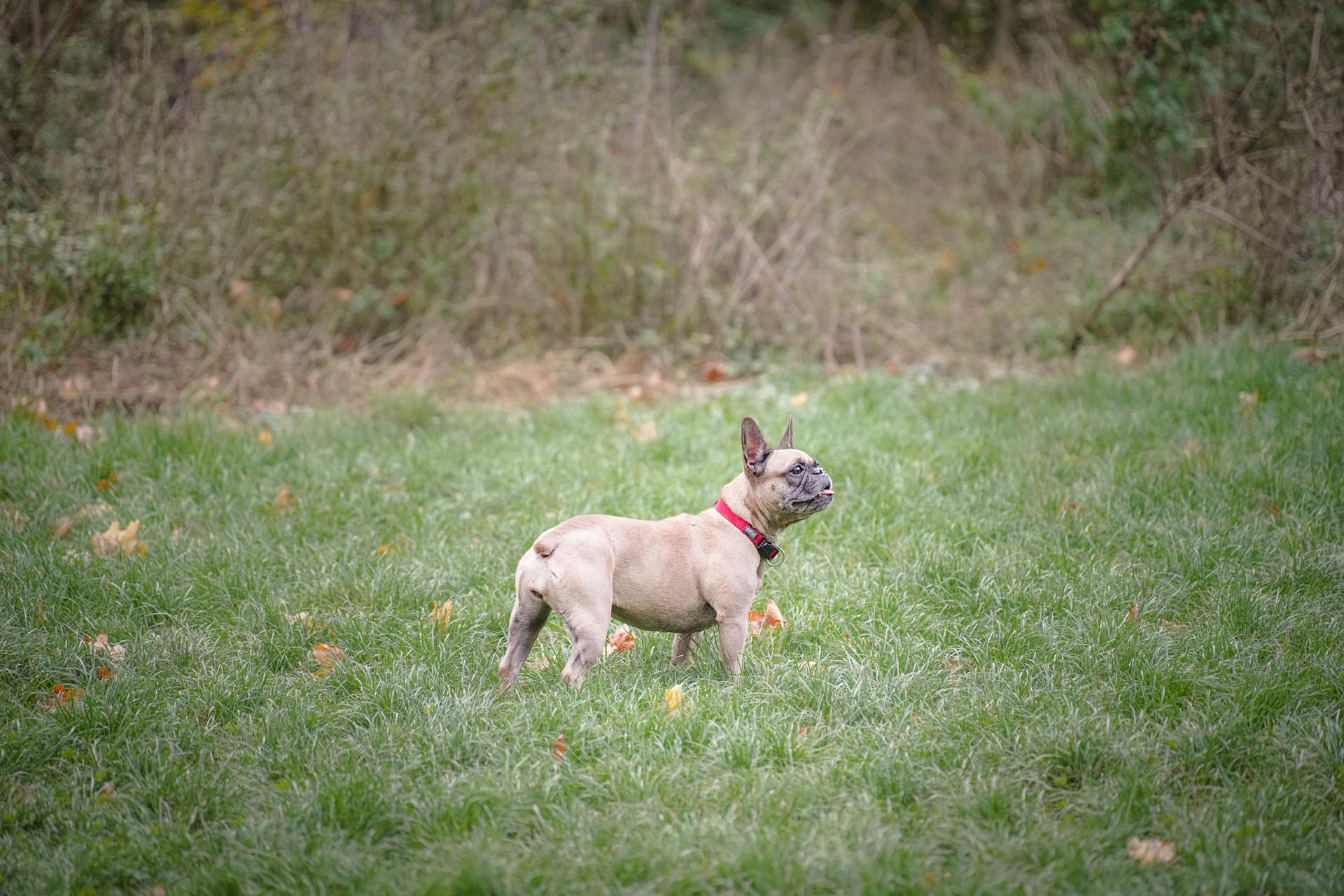
French Bulldogs can be prone to mange, a skin condition caused by parasitic mites. Mange is a serious issue that requires immediate attention.
The most common type of mange in French Bulldogs is demodectic mange, which is caused by Demodex mites. These mites are naturally found on dogs, but in French Bulldogs, they can cause skin problems.
French Bulldogs are more susceptible to mange due to their skin folds, which can trap moisture and create an ideal environment for mites to thrive. Regular grooming is essential to prevent skin problems.
To care for a French Bulldog with mange, it's crucial to keep their skin clean and dry, and to use medicated shampoos as recommended by a veterinarian.
Causes of Mange
Mange in French Bulldogs is often caused by an overabundance of Demodex mites in the hair follicles of dogs.
These microscopic mites are normally kept in check by a dog's immune system, but some breeds, including French Bulldogs, can develop an issue with them.
In mild cases, pet owners may notice a few dry, irritated, hairless lesions on the face or feet, which may or may not be itchy.
Secondary skin infections can occur, and prompt veterinary care is essential to prevent the disease from getting out of hand.
Mange in French Bulldogs

Mange in French Bulldogs can be a real challenge for pet owners. Mange is caused by mites that burrow into the skin of your Frenchie.
There are two main types of mites that can cause mange in French Bulldogs: Demodex and Sarcoptes. Demodex mange is usually localized to one spot, while Sarcoptes mange can affect the entire body.
Your vet will need to conduct a thorough physical inspection to identify the type of mite causing the mange. They'll look for signs of mite infestation, such as hair loss and skin irritation.
Treatment for mange varies depending on the type and severity of the infestation. Your vet will prescribe the right medication to get your Frenchie back on the road to health.
Demodex mange is often treated with topical creams or ointments, while Sarcoptes mange may require oral medication. In some cases, a combination of both may be necessary.
Here are the two main types of mange that can affect French Bulldogs:
Caring for Your French Bulldog
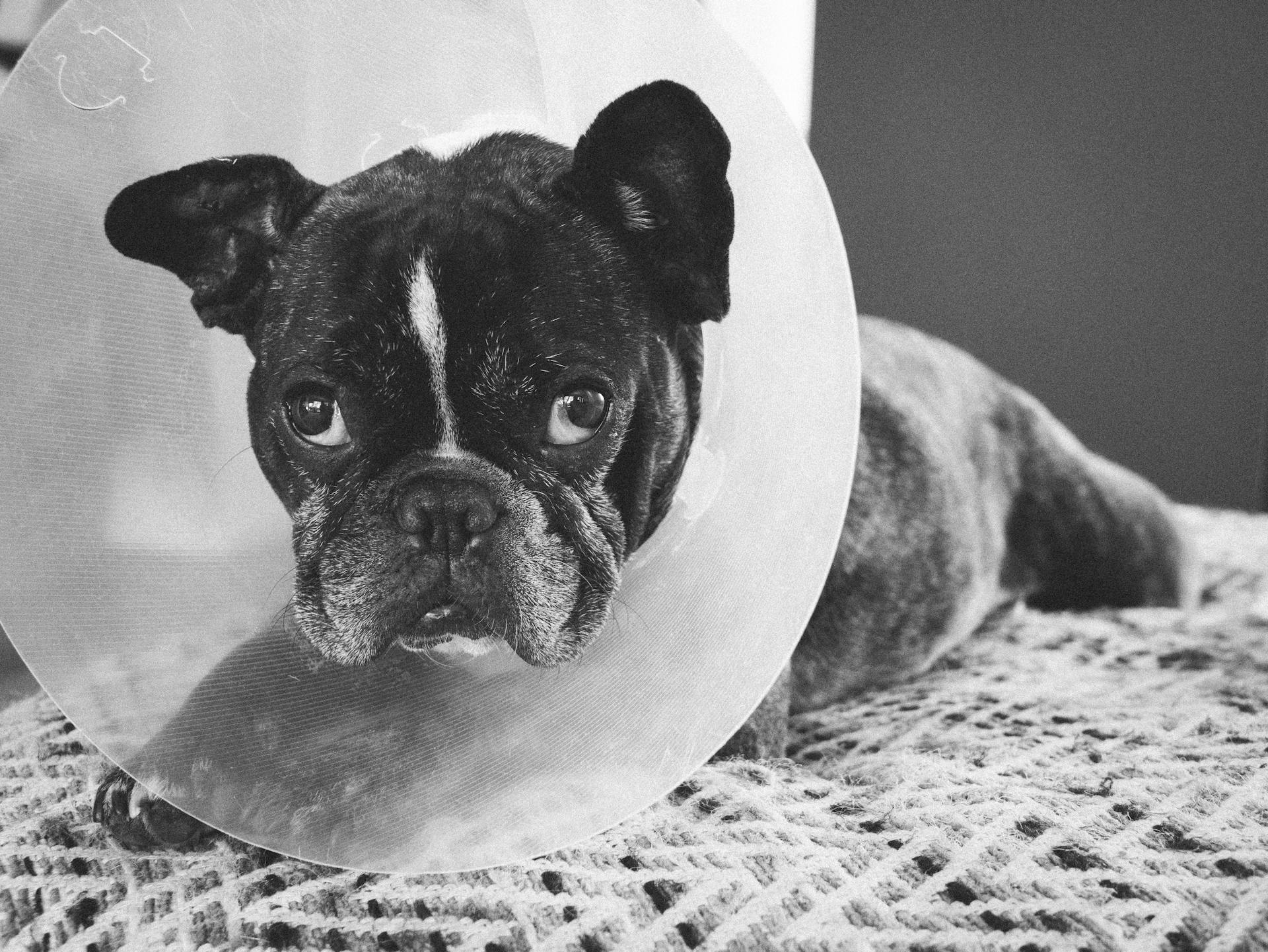
Caring for your French Bulldog is a big responsibility, but with a little common sense, you can keep your dog happy and healthy.
Regular exercise is essential for French Bulldogs, so make sure to give her plenty of physical activity every day.
Brushing her teeth and coat regularly is also crucial to prevent tartar buildup and matting.
You should also stick to the recommended schedule of examinations and vaccinations to catch any potential health issues early on.
Signing up for pet health insurance is a smart move, as it will help you cover the costs of medical tests and procedures your French Bulldog may need throughout her life.
Caring for Your French Bulldog
French Bulldogs can develop allergies just like humans, and common signs include itchiness, hair loss or bald patches, swelling on the dog's body, red eyes or skin, shortness of breath or wheezing, and diarrhea or vomiting.
Environmental allergies can be triggered by molds, pollens, dust mites, and parasites like ticks, fleas, and mites, which can cause painful lesions and hair loss.
Readers also liked: English Bulldog Hair
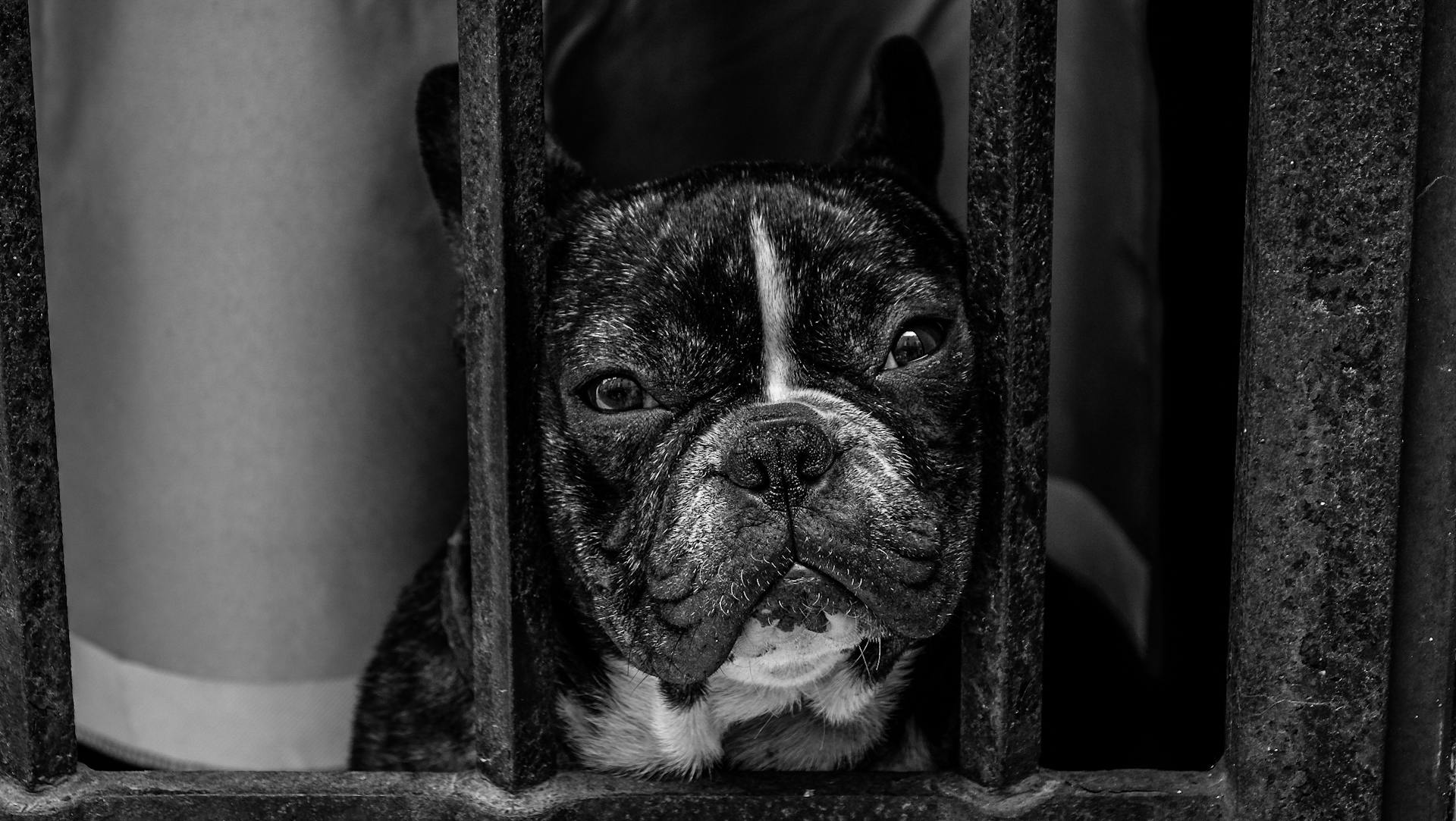
You should regularly brush your French Bulldog's coat to prevent matting and tangling, and to distribute skin oils.
It's essential to provide your French Bulldog with a hypoallergenic diet if your vet suspects a food allergy, and to use topical or internal medication, allergy shots, and avoiding the allergen if your dog has a flea allergy.
To keep your dog happy and healthy, watch her diet, make sure she gets plenty of exercise, regularly brush her teeth and coat, and call your vet or a pet emergency hospital when something seems unusual.
Here are some common signs to watch for:
- Change in appetite or water consumption
- Tartar build-up, bad breath, red gums, or broken teeth
- Itchy skin (scratching, chewing, or licking), hair loss
- Lethargy, mental dullness, or excessive sleeping
- Fearfulness, aggression, or other behavioral changes
Regular veterinary check-ups and vaccinations are crucial to prevent diseases and conditions common in French Bulldogs, and pet health insurance can help cover medical costs throughout your dog's life.
Skin Infections
French Bulldogs are prone to skin infections, especially lip-fold pyoderma, which occurs in the moist folds of skin along the lower jaw. This can cause a reddened, smelly area that's uncomfortable for your dog.

Bacteria and yeast can easily grow out of control and create infections, leading to hair loss, itching, and redness. You might notice bald patches on your Frenchie's body.
Skin infections can also be caused by ticks, mites, or fleas, which can be itchy or scaly. If you see any of these symptoms, it's essential to take your dog to the vet.
Your vet will likely prescribe antibiotics or antifungals to treat the infection. In severe cases, excess skin folds can be surgically removed.
Frequently Asked Questions
What is the fastest way to treat mange in dogs?
Treating mange in dogs typically requires a multi-step approach involving medicated baths, topical treatments, and oral medication, which may need to be repeated over several weeks to ensure complete removal of the mites
How can you tell if your dog has mange?
Look for intense itchiness, crusted skin, hair loss, and a rash, which are common signs of mange in dogs. If you notice these symptoms, it's essential to consult a veterinarian for proper diagnosis and treatment
What does mange look like in the beginning?
Mange initially presents with a reddened rash, yellowish crusts, and hair loss, often affecting the ear margins and elbows. Thickened, crusty material and yellow scales may also be visible on the ear tips.
Sources
- https://www.frenchie.shop/blogs/frenchie-shop-blog/why-is-my-french-bulldog-losing-hair-what-to-do-about-it
- https://barneyandrussum.net/client-resources/breed-info/french-bulldog/
- https://sanlorenzovets.com/client-resources/breed-info/french-bulldog/
- https://www.dogfoodadvisor.com/forums/topic/skin-allergy-in-my-french-bulldog/
- https://www.chagrinfallspetclinic.com/2007/07/11/mange/
Featured Images: pexels.com
